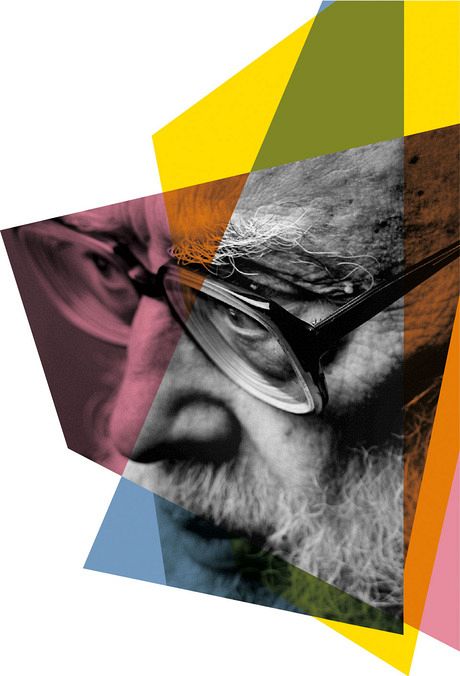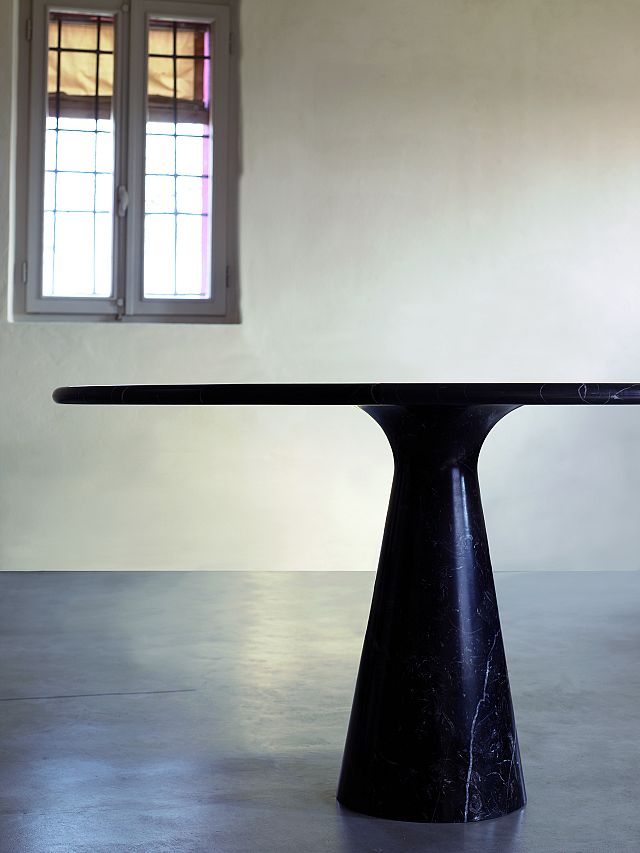One of the most influential personalities in 20th century Italian culture, Angelo Mangiarotti was an architect, planner, designer and sculptor. He also taught extensively at Italian and international universities, passing on his visions and shaping the minds of generations of young architects and designers. His design approach was rooted in the firm belief that architecture was a practical discipline and that industrial design was an expression of fine craftsmanship. He wanted each individual material to be respected and to be used in an adequate and honest way. The perhaps best-known Mangiarotti quote, “happiness comes from honesty”, is a reference to that approach. Additionally, Mangiarotti was deeply committed to general ethical standards.









Mangiarotti worked in many different design areas: he designed jewellery, tables and other furniture, office systems, vases, lamps, tableware, watches, buildings, industrial plants and urban development projects, and he also created independent sculptural works. He was a representative of strict functionalism, paired, however, with a fine sense for elegance and beauty. Based on intelligent studies and using the cutting-edge technologies of his time, Mangiarotti advanced his shapes and forms to a degree that gave them sculptural qualities. Mangiarotti respected the ideals of modernism; he studied them intensely and eventually went beyond them by achieving outstanding aesthetics with an economy of means. Mangiarotti explained the theoretical basis of his work in his 1987 book Nel nome dell’architettura (In the Name of Architecture). In this book, he highlights the specific characteristics of each object, in the sense of a design that is intuitively recognised and accepted by a large audience.
In his last years of life, Mangiarotti refocused on sculpture, which he had already intensely studied in the 1980s. His sculptural art can be described as a synthesis of both his philosophy and design: material and form, design and its relationship to humans and their environment.
Agapecasa is a unique collaboration between Studio Mangiarotti and leading Italian bathware company Agape. Agapecasa extends the Agape vision with original pieces including chairs, tables & storage units, that are refined, functional and modern conceived by an extraordinary architect whose experimentation established new reference parameters in typology, form and construction.
-
Angelo Mangiarotti was born on 26 February 1921 in Milan. He graduated in architecture from the Milan Polytechnic in 1948. From 1953 to 1954, he worked in the USA, where he met Frank Lloyd Wright, Walter Gropius, Mies van der Rohe and Konrad Wachsmann and where he was also a visiting professor at the Illinois Institute of Technology in Chicago. Together with Bruno Morassutti, after that he opened an architectural practice in Milan. At the beginning of the 1960s, Mangiarotti was also a visiting professor at the Venice Istituto Superiore di Disegno Industriale, followed by teaching posts at many other institutions. In 1989, he founded the Mangiarotti & Associates office in Tokyo. From 1986 to 1992, he was art director at Colle Cristalleria. He also taught extensively at different international universities and published many highly regarded books on design and architecture, two areas of his work that won him a number of awards. Many solo exhibitions have been dedicated to Angelo Mangiarotti: in 2002, in his home town of Milan, he was honoured with the project “Angelo Mangiarotti. Archiecttura Design Scultura”, which was shown at the Triennale di Milano and with the Laurea Honoris Causa for industrial design, which he received at the Politecnico di Milano. In 2004, the gallery MA in Tokyo dedicated a big exhibition to him and in 2009, the large exhibition “Angelo Mangiarotti. Scolpire/Costruire” opened in Casa del Mantenga in Mantua, supported by the province of Mantua and the company Agape. During the last years of his life, Angelo Mangiarotti focused on the art of sculpting. He died on the 30th of June 2012 in Milan.